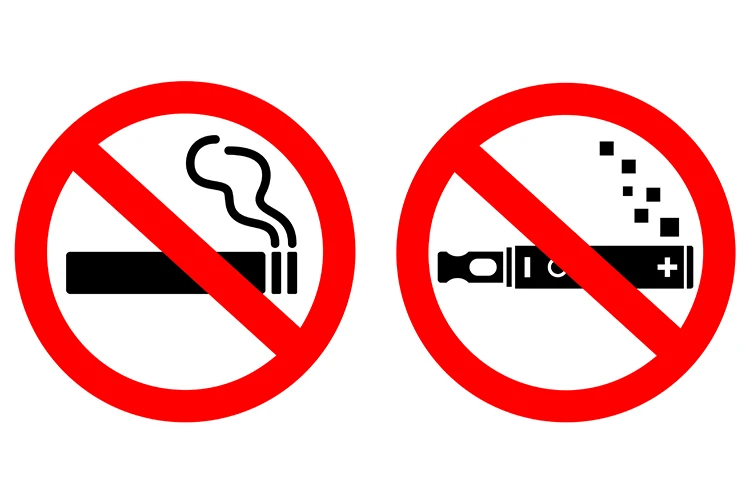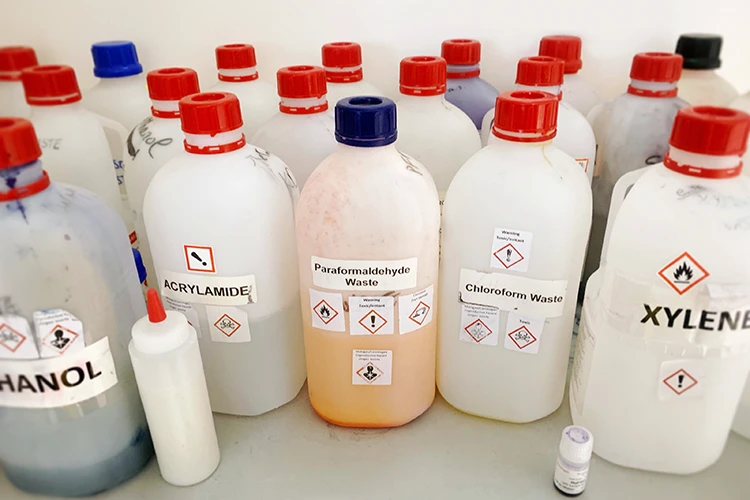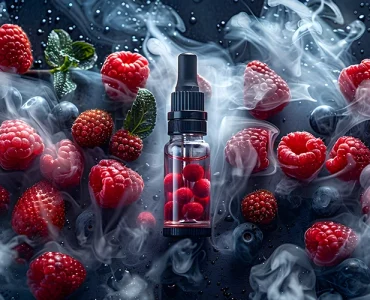Vaping is still a relatively new thing and to some, it is a strange mix of old habits and new technology. Anything that causes societal change, and particularly if that new thing is rapidly taken up by younger generations, also causes concerns. As we try to get to understand the new thing, untruths, myths, and misconceptions naturally develop.
There have been many popular myths about vaping over the last 20 years. Some have been roundly quashed, but others linger, and more still pop up from time to time. In this article, we have gathered up some of the most commonly repeated myths about vaping, hunted down the facts, and added some ways that you can respond. So the next time someone says something like “Nicotine causes cancer” or “Vaping is a gateway to teenage smoking”, you’ll know what to say.
Myth: Vaping is Equally as Harmful as Smoking
This is a common misconception about vaping, especially among people who don’t smoke or vape themselves. After all, vaping looks like smoking, contains nicotine like smoking, and the use of vape products is controlled in the same way that tobacco is. It can be easy to assume that both vaping and smoking are just as bad for your health and the health of those around you.
The Facts: Tobacco smoke can contain as many as 5000 different chemicals, of which at least 70 are known carcinogens. Vape liquids also contain chemicals, with more being produced when the liquid is aerosolized. However, studies have shown that these potentially harmful chemicals are found at levels between 88% and 99% lower in vapes than in tobacco smoke.
There have been deaths associated with vaping, but these are most commonly related to the use of unregulated black-market devices and vape liquids. Around 70 such deaths were linked to Vitamin E Acetate in THC cartridges in 2019-20. Few, if any other deaths can be definitively linked to vaping alone. As a comparison, around 480,000 people die from diseases directly related to smoking tobacco in the United States annually, and perhaps as many as 7.7 million around the world.
Vaping is not harmless, and no responsible source will tell you that it is. But, based on the evidence available from the medical community, it is safe to say that it is extremely unlikely to be as harmful as smoking.
How to Respond: “No one is suggesting that vaping is completely harmless, but medical experts around the world almost entirely agree that vaping is less harmful than smoking tobacco. Some studies show that it could be as much as 95% less harmful to health than smoking, and not even the most pessimistic research has proven vaping is anywhere close to being as harmful as smoking cigarettes.”

Myth: Vaping Causes Popcorn Lung
The threat of developing this potentially devastating disease has been used as a stick to beat vaping with for years. In 2000, Popcorn Lung, or Bronchiolitis Obliterans, was first discovered to be affecting workers who had inhaled the flavoring chemical Diacetyl when it was mixed with hot oil in a popcorn factory. Because many vape liquids also contained Diacetyl as a flavoring, the link was made that vaping could also cause Popcorn Lung.
The Facts: The chemical that can lead to Popcorn Lung, Diacetyl, is now rarely used in vape liquid. Its use as a vape flavoring has been banned in most countries for several years, including the U.K., Australia, and most of Europe. A Canadian study in 2021 tested over 800 popular vape liquids and found Diacetyl in just two of them, and none in the liquids produced after 2018.
Even though Diacetyl and other diketones were used for years (and continued to be routinely used in liquids sold in the U.S. until quite recently,) there has yet to be a single case of Popcorn Lung reliably linked to vaping. It is also worth noting that tobacco can contain up to 700x more Diacetyl than vape liquid ever did, and yet smoking is rarely said to increase the risk of developing Popcorn Lung.
How to Respond: “Popcorn lung is an incredibly rare condition, and has been since it was first recognized more than twenty years ago. If it was reliably linked to vaping, cases of the disease would have spiked as vaping increased in popularity over the last decade or more. This hasn’t happened, and there are still no confirmed cases undeniably caused by vaping.”
Myth: E-Cigarettes Explode Easily
The thought of something you hold so close to your face exploding without warning is scary so, unsurprisingly, stories of malfunctioning vapes stick in people’s minds. There was a time, not so long ago when stories about people being injured by vapes seemed to be in the news constantly. In truth, vapes exploding or malfunctioning and leading to injury or fire is a pretty rare occurrence and is almost always due to incorrect usage.
The Facts: It is difficult to find figures on exactly how many vaping devices explode or otherwise malfunction badly enough to cause injury each year. Not all instances will be reported or recorded, and many statistics rely on searching for cases reported in the news.
A study in 2018 looking for reports of exploding vapes between 2015 and 2017 found 164 cases. To put that figure into perspective, it is estimated that around 6 to 7 million Americans regularly used vapes in 2017. Of those reported cases, the majority of the injuries occurred to the thigh or hip. In other words, while the vape or battery was in a pocket where they can be damaged or shorted out by keys and other metal objects.
Finding accurate data about vapes exploding whilst being charged is equally difficult, as these are even less likely to be reported unless significant damage was caused. However, the majority of reported cases tend to be blamed on incorrect battery charging methods, such as using the wrong cable or covering the device (with a cushion, for example) during charging.
How to Respond: “All batteries have the potential to overheat or even explode if damaged or misused, and those found in vapes are no different. As long as you buy devices and batteries from reputable brands, properly maintain your batteries and devices, and follow the manufacturer’s charging instructions, a vape is no more likely to explode than any other battery-powered device.”
Myth: Vaping is More Addictive Than Smoking
The addictive qualities of nicotine have been studied and understood for decades. While vaping can’t be definitively said to be less addictive than smoking, there is absolutely no evidence to suggest that it is more addictive. This is therefore a myth about vaping that is quite easy to dismiss.
The Facts: Various studies have shown that two-thirds of people who smoke a single cigarette will go on to become daily smokers. On average, it will take those people 30 attempts to quit smoking without help from a smoking cessation device.
The anti-smoking charity ASH (Action on Smoking and Health) analyzed numerous surveys of American teenagers and found that those who vape but don’t smoke are much less likely to become strongly nicotine-dependent than those who smoke, or those who smoke and vape.
How to Respond: “Switching from smoking to vaping is certainly swapping one method of feeding an addiction for another, but quitting vaping is almost certainly going to be easier and more successful than quitting tobacco cold turkey. It is also a less harmful way to get a nicotine hit while working towards giving it up.”
Myth: Vaping Doesn’t Help You Quit Smoking
Following on from the previous myth is the idea that vaping isn’t a valid smoking cessation device. This myth is almost certainly more prevalent in some countries than it is in others, due to the different stances governments and leaders have taken on the issue.
The Facts: In the U.K. and many other countries, vaping has been embraced as a powerful way to help people give up smoking tobacco. The British National Health Service openly states that “Nicotine vaping is substantially less harmful than smoking. It’s also one of the most effective tools for quitting smoking.”
In 2019, research found that of the 3.2 million adult e-cigarette users in the UK, more than half had completely stopped smoking. A further 770000 had quit both vaping and smoking with help from local smoking cessation services.
The view that vaping is a good way to quit smoking isn’t unanimously shared around the world. In the U.S., the CDC and FDA are far more reluctant to promote vaping in any way and instead say that the evidence of its success as a cessation device is unproven or inconclusive.
How to Respond: “Vaping is no more addictive than smoking, and significantly less harmful. Switching to vaping might not mean that you can instantly give up all nicotine, but it is certainly easier to control and reduce your intake with a vape than with cigarettes.”
Myth: Vaping is Just As or More Expensive Than Smoking
Even if you live somewhere where tobacco and cigarettes are relatively cheap, this claim is likely to be nonsense. The cost of vaping has actually come down in recent years due to increased competition, while the cost of smoking has risen almost everywhere. In some countries where tobacco is heavily taxed, such as the U.K. or Australia, 20 cigarettes can now cost the equivalent of twenty or thirty dollars.
The Facts: We have looked at the cost of vaping compared to smoking in some detail here at Versed Vaper. In the U.S., the average cost of 2ml of vape liquid is under $1. That will provide between 300-400 puffs, equivalent to 20 cigarettes. With the average price of 20 cigarettes sitting at $6.50, it means that vaping is up to 85% less expensive than smoking (or 75% less if you take into account the initial device cost, replacement coils, pods, etc.)
It should be said that the cost of vaping varies depending on how you vape. Disposables are convenient, but more expensive in the long term than buying a pod vape and a bottle of vape juice once a month. Even so, disposables are still likely to cost two-thirds less than the equivalent amount of cigarettes per week, month, or year.
How to Respond: “With $15 dollars in my pocket, I can buy enough vape juice to last a month, even if I vape the equivalent of 20 cigarettes a day. To buy the same amount of cigarettes would cost at least ten times as much, and probably more.”
Myth: Vape Liquid Contains Dangerous Chemicals
This is part myth and part truth. The claims that vape juice contains things like anti-freeze are just ridiculous, but it can produce chemicals like formaldehyde when it is aerosolized. But as with many of these myths, the devil is in the details.
The Facts: Exactly how and when the idea that vape juice contains anti-freeze got started is unclear. It appears to have its roots in the fact that some of the ingredients of vape liquids can also be used in anti-freeze, including propylene glycol (PG). This somehow mutated into headlines like “BEWARE – VAPE JUICE CONTAINS ANTI-FREEZE” in a logical backflip that is hard to comprehend. It’s like saying lemons contain detergent, just because some detergents contain citrus oil.
Formaldehyde is the other chemical that many people seem to worry about being in vape liquid. It’s certainly true that inhaling a lot of formaldehyde wouldn’t be very good for you. But whether it occurs in vape aerosol in any significant harmful quantity is debatable. The study by the New England Journal of Medicine that prompted formaldehyde concerns has been debunked as unrealistic (it produced formaldehyde from vaping, but only by reproducing prolonged dry-hit conditions that no human could stand).
How to Respond: “Vaping probably does produce tiny amounts of formaldehyde. Do you know what also contains formaldehyde? Coffee, apples, seafood, onions, mushrooms, the air, our breath… This naturally-occuring compound of carbon, hydrogen, and oxygen is literally all around us.”

Myth: Nicotine Causes Cancer
Some statistics suggest that as many as 40% of people believe that the nicotine in cigarettes and vapes is the main (or at least a leading) cause of cancer. The misconception is almost understandable because nicotine has been branded as the bogeyman of smoking for years. Nicotine is a poison, and why couldn’t inhaling a poison lead to cancer?
The Facts: Cancer-causing chemicals in tobacco smoke include benzene, arsenic, cadmium, acrolein, and polycyclic hydrocarbons, among many more. There is not a single study to be found that reliably suggests that nicotine is a carcinogen. The blame for someone developing cancer cannot be laid at the door of nicotine, no matter how hard you look.
That’s not to say that nicotine is harmless. It really is a poison (in large quantities) and is known to be harmful to the development of unborn and very young children. But this chemical has suffered a bad rep, and there is now increasing evidence that it could actually be beneficial in certain circumstances.
How to Respond: “Nicotine, while addictive, is probably one of the least harmful of all the major chemicals found in tobacco smoke. It does not cause cancer in tobacco smoke or vapes. It has never been classed as a carcinogen, and if you can find me one reputable study that says that it is, I’ll give you a hundred bucks.”
Myth: Vaping is a Gateway to Smoking in Teens
This is a big one for some people. There is this idea that vaping is attractive to young people and that starting vaping will lead them to turn from good kids into chain-smoking dead-beats (a slight exaggeration, but you get the point). The evidence for this, however, just doesn’t seem to be there. Teenagers might smoke, and teenagers might vape, but one does not obviously lead to the other.
The Facts: Smoking among middle and high-school-age children are at some of the lowest levels ever seen. Vaping in general, and specifically among youngsters, has vastly increased in popularity in the last several years. If vaping was a gateway to smoking, wouldn’t the rate of smoking in children have risen alongside the popularity of e-cigarettes?
The CDC estimates that just 1.9% of high school kids, and 1.1% of middle school kids, have smoked cigarettes in 2023. Yet they also estimate that 10% and 4.6% (respectively) have used an e-cigarette in the same period. The figures have gone in opposite directions for several years; fewer smokers and more vapers.
We agree that it isn’t great that more kids are vaping and more should be done to educate children about the potential dangers, but the idea that vaping is a gateway to smoking seems very unlikely.
How to Respond: “If vaping leads to smoking, and vaping among children is increasing, why hasn’t the level of smoking among children also increased? Instead, it is at some of the lowest levels ever seen, which could suggest that the much less harmful act of vaping is actually reducing smoking in children.”
Myth: We Don’t Know the Long-term Effects of Vaping
The creation of the first modern vape is credited to Chinese inventor Hon Lik in 2003. It then took several years before vaping was anything more than a very niche alternative to smoking. It was also several years before any serious studies began on the effects of vaping. The idea that we have no idea about the long-term effects of vaping isn’t exactly a myth, but it does seem to be at least partially untrue.
The Facts: When trying to predict the effects of vaping, it’s true that science does not have hundreds of years of use and 70 or 80 years of research and study to look at, as it does with tobacco. It does, however, have years of studies on the effects of nicotine and the properties of the other main ingredients in vape liquids. This knowledge can and is being used to predict the long-term effects of vape use.
Vaping has never been promoted as risk-free, it’s heavily regulated in most countries (and regulations increase all the time,) and thousands of studies have been done or are being done into the dangers and effects. Few people, if anybody, would try to argue that there is no possibility of long-term adverse effects from vaping. We just don’t yet know, and so we have to go with the available science.
We do know the long-term effects of smoking tobacco, and as long as vaping is considered to be even marginally less harmful, it should be considered as a viable alternative while studies continue.
How to Respond: “It’s true, we don’t know the potential effects of vaping for 50 years. However, the majority of the current evidence suggests vaping is less harmful than smoking. Surely, it’s also common sense that something with fewer chemicals, few known carcinogens, and that is proving to be easier to quit than smoking is a better alternative. The old saying “It’s better the devil you know” just doesn’t work here.”

The bottom line
With how popular vaping has become, there will undoubtedly be critics who have something to say. Whether out of ignorance or for malicious reasons, criticism of vaping is something that you will certainly encounter in your day-to-day life, whether you are a vaper or not. Hopefully, this list of vaping myths and how to respond has given you the knowledge needed to stand your ground when you inevitably meet one of these critics.
As we’ve shown, much of the criticism against vaping is disingenuous, or misguided at best. The next time that you find yourself in a heated debate about vaping, take a deep breath and calmly refute their claims.
Know other vapers who might benefit from the information in this article? Share this list of vaping myths with your friends and family; they might just learn something that they didn’t know.










Add comment